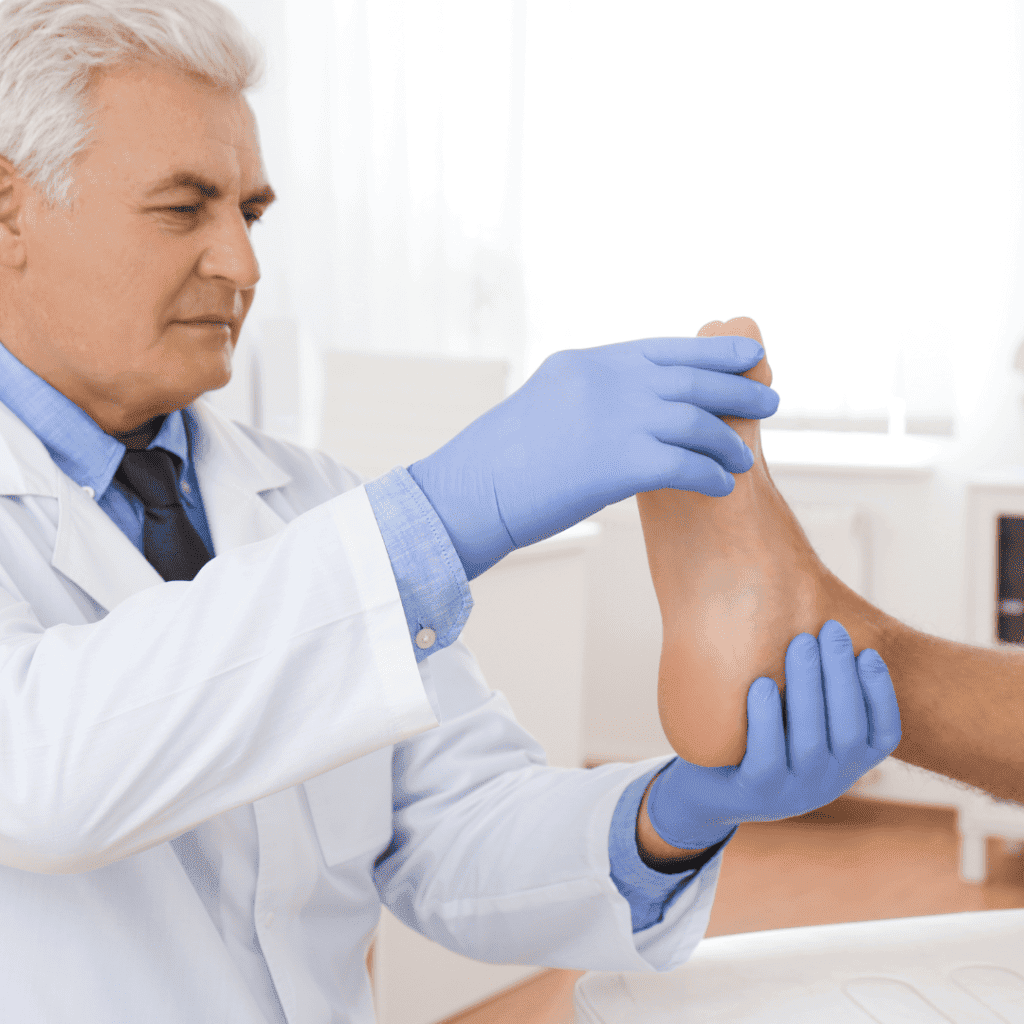Causation or Correlation?
The foot is one of the most complex structures in the human body. It has 26 bones, making up 33 joints. There are so many tiny interactions between bones and joints, governed by tiny muscles, which makes the foot prone to pain and injury. One epidemiological study evaluated pain and function of 16,222 subjects over the age of 55 (1). The study found pain in the feet to be reported second most frequently to knee pain. Additionally, “only 1 in 11 of those with foot and ankle pain reported it only in the foot (1).” This suggests there are often pain areas in the knee, hip, or back coupled with the foot pain reported.
When we consider pain in joints up the chain from the foot, is it causation or correlation?
From our clinical experience at Regenexx at New Regeneration Orthopedics of Florida, we have thousands of data points suggesting that knee, hip, back, and pain otherwise can be caused by issues in the feet.
A Story About Feet
As a matter of fact, one of my favorite patient stories is when a 70-year-old gentleman came to my office for his first evaluation at Regenexx for low back pain. In his visit, he explained that he had exhausted every avenue for his back pain. He has been to every doctor and specialist over the span of a decade. Even after cortisone injections, round after round of physical therapy, and MRIs that didn’t point to surgery, he still couldn’t say he had any relief. So, in his evaluation I told him:
“I am going to do a detailed orthopedic exam on your pelvis, hips and spine to compare with your X-rays and MRIs you provided. But before we do that, can you take your shoes off for me? I want to look at your feet.”
He Looked at me curiously and said, “What? You want to look at my feet?”
I said, “Yes, because a lot of times unresolved issues in your spine can originate from the feet.”
He obliged, and took off his shoes. Not to my surprise, his feet were flat, he had bunions on both sides, and his toes were gnarled and overlapping over each other. I explained how structurally and functionally this can contribute to chronic low back pain.
He said, “No one has asked me to take my shoes off before.”
Thankfully, this patient went on to successfully improve his quality of life and reduce his back pain. He had a Regenexx platelet rich plasma (PRP) procedure in his spine and he complied with a physical therapy prescription that addressed both his lumbar spine stability and foot stability.
So, why did addressing his gnarled feet matter in the success of his recovery?
The Entire Kinetic Chain Starts at the Feet
The feet are quite literally the foundation to your entire body. Structurally, the foot has a system of arches that provide its structure. The foot should have naturally arching “bridges” from front-to-back and side-to-side (2).
If any of these arches are compromised, so is the structure of the foot. An arch can be too small or too large, causing a change to this foundational structure. A neutral foot has an even distribution of pressure from the front to back and side to side. Notice in image 2, the flat foot has more pressure in the middle arch and a high-arched foot has more weight and pressure distributed to the outer foot.
Arch abnormalities can be caused by various factors, including:
- Genetics
- Footwear
- Habits
- Walking Gait Pattern
- Injury
Regardless of the cause, it is important to know what direction your foot trends, towards an excessively high arch or an excessively flat arch, so it can be corrected, supported, or prevented.
Other than the appearance of your arch, one of the ways a clinician can evaluate the health of your foot is by looking at your big toe and your ankle. Image 3 illustrates the balance each area of the body should relative to its neighboring joints (3).
There is an alternating pattern of mobility (flexibility) and stability (strength) needed in certain areas of the body to ensure the distribution of forces up the chain is healthy. In other words, the function of the toes, foot and ankle determine what happens at the knee, hip, and back.
The alternating joint pattern for optimal function is as follows:
- Big toe – needs to be mobile
- Foot – needs to be stable
- Ankle – need to be mobile
- Knee – needs to be stable
- Hip – needs to be mobile
- Lumbopelvic Hip complex – needs to be stable
When each joint performs their role according to this pattern, pain and injury can be avoided or improved “up the chain” in the knee, hip, or back.
To illustrate, the mobile big toe gives integrity to the arches and helps the foot to provide a health foundation to the ankle, knee and so on. Image 4 illustrates what happens “up the chain” in Pronation Distortion Syndrome when the arch collapses (4).
When a big toe isn’t mobile, for example, the arch will collapse in a functional gait cycle. Then, the entire kinetic chain allows suit, the tibia (lower leg bone) will rotate inward, causing stress at the knee and the inward rotation of the femur (thigh bone). This then puts undue pressure on the hip and excessive side or rotational motion at the lower back and pelvis.
The Takeaway?
When treating an injury or area of pain, it is important to consider the entire kinetic chain. If back pain has been plaguing you and the cause is unknown, a clinician who has the skill to evaluate you as a whole can make a big difference. As therapist Ida Rolf famously said, “Where you think it is, it ain’t,” suggesting that the root cause of a pain condition can originate from somewhere seemingly unrelated to the pain area.
We know the kinetic chain matters when it comes to addressing an area of pain. As in the case of my patient, we can treat the targeted area of pain and then rehabilitate the contributing areas. He had his spine treated with PRP and then the rehabilitation focused on the stability of his lumbopelvic hip complex, the mobility of his big toe and ankle, and the stability of the foot.
Even if your feet have never bothered you, it doesn’t mean they’re not contributing to your ankle knee, hip, or back pain. If this sounds like you, or someone you love, one of our physicians at Regenexx at New Regeneration Orthopedics of Florida in Sarasota, St. Petersburg, Tampa, or Orlando would be a great first step at helping you understand the root cause of your pain.
References:
- https://jfootankleres.biomedcentral.com/articles/10.1186/s13047-019-0363-9
- https://teachmeanatomy.info/lower-limb/misc/foot-arches/
- https://www.otpbooks.com/expanding-on-the-joint-by-joint-approach-by-gray-cook-part-1-of-3/
- https://newregenortho.com/do-it-yourself-exercises-to-beat-foot-and-ankle-pain/










